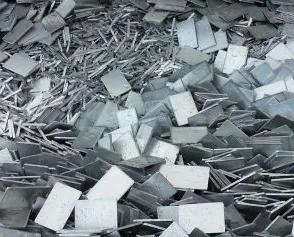Belgium is the fourth most productive country in the world, but our productivity growth has been sputtering. In this series we present some practical tips each time to boost productivity in the office and on the shop floor.
In the first part of this series we discussed the productivity of Belgian companies. Productivity growth in our country has been very low in recent years. In 1930, John Maynard Keynes predicted that his grandchildren would only work a 15-hour week thanks to productivity growth. He had good reasons to be optimistic. For example, he reports that in the US, industrial productivity per worker rose by as much as 40 per cent from 1919 to 1925. We may delude ourselves that we live in a time of rapid technological evolution, but compared to a hundred years ago, our productivity growth is only going at a snail's pace. If Keynes' prediction is to be fulfilled by 2030, there is still work to be done.
In order to support Belgian companies with their productivity improvements, we collected a number of tips that we will publish at regular intervals. These tips are focused on improvements that require little effort and are within reach of all companies.
Tip 59: Deal better with bottlenecks, let the intermediate supply control production
Productivity is the relation between output and inputs (labour hours). The output of a production process is determined at any time by the slowest step, the 'bottleneck'. By increasing the capacity of the slowest step, you can increase the output and thus the productivity of the entire plant. You can increase the capacity by all kinds of technical interventions (see previous tips), or sometimes by deploying more people at the bottleneck. But where are you going to get those people? Well, the answer is simple. The fact that, logically, only one workstation can be the slowest means that all the other workstations actually have surplus capacity compared with the bottleneck. So, in principle, you could shift people from the over-capacity workstations to the bottleneck.
In practice, you quickly run into three problems. Firstly, it is not always clear what the bottleneck is. Changes in the product mix or production problems can shift the bottleneck between workstations. Secondly, by shifting resources, the bottleneck may also shift. Taking someone away from a workstation that has too much capacity may mean that there is too little capacity just there. Thirdly, in practice, it is not easy for supervisors to constantly monitor the production process and constantly shift people around.
However, there is an elegant solution. The trick is to let not the supervisor, but the intermediate stock control the production. Orders spontaneously accumulate in the intermediate supply right before bottlenecks, just as cars accumulate in the traffic jams before accidents or road works. Therefore, as soon as an intermediate stock exceeds an agreed trigger point, employees must move to the bottleneck. As soon as the stock drops below a certain level, one can return to the original workstation, or possibly go to a new bottleneck.
You cannot expect your employees or supervisors to constantly count the intermediate stock and make decisions about the necessary adjustments. A good production system monitors itself and tells the employees what to do. You can do this by marking out clear locations for the intermediate stock. As soon as the intermediate buffer threatens to overflow, people can see that it is time to step in. Visual colour signals, which indicate the position of the intermediate buffer, can be of great help here (see also tip 55 on the visual factory).
The video below shows how this was put into practice in a production company.
Tip 60: Sort out aluminium scrap better
By better managing your waste streams, you can tap into an additional revenue stream, which is a lucrative way to increase productivity. At the same time, you are helping to leave the planet in a better condition for the next generation.
Aluminium scrap can take various forms, such as sheets, tubes, profiles, castings, etc. Each form is typically made from a specific aluminium alloy with a specific composition. Having all these fractions disposed of together as one type of waste is not the best option, because the purity of the scrap that is collected largely determines its residual value.
As a rule of thumb, you can assume that very thin sheet metal and foil material (almost unalloyed) should always be separated from extrusion profiles (construction profiles are usually alloyed with mainly Si and Mg; hollow pipes are typically made of Mn-containing alloys) In any case, it is best to keep casting alloy waste (the most highly alloyed types of aluminium) separate. You can also add foamed aluminium and other unprecedented alloys to this waste fraction of the casting alloys. Also keep coated and bright aluminium apart.
These sorting rules are quite simple and are also applied by the scrap collector as the first processing step. However, it is more efficient to organise separation at the source (at the processing machine, saw, mill, etc.). Of course, the quantities also determine the value of the scrap. Nevertheless, it is still valuable to pursue this separation, even for smaller quantities.
It is always useful to talk to your scrap metal collector about better sorting and valorising your aluminium scrap. It is by sharing knowledge that more residual and by-product streams can find high-quality recycling.
More information about aluminium recycling can be found here.
Tip 61: Leave machines running unattended at night
A number of automated production processes (e.g. injection moulding) already run largely unmanned during the day and can easily continue working at night. Therefore, preferably try to start up larger orders mainly in the evening so that the machines can continue to run for some time.
Some machines need some warm-up time in the morning or after a weekend before they can produce, so some productive time may be lost in the morning. This can often be overcome by using a timer to start the machine before the start of the working day. This allows the machine to preheat at the end of the night.
Some machines or products have a relatively short cycle time by nature, which does not always allow for long night shifts. However, it is sometimes possible to set up a machine in such a way that several products can be processed on it, which increases its running time. The video below shows how a milling machine can be set up with several clamping jaws so that the machine can finish several parts in succession.
Tip 62: Start with autonomous maintenance
In tip 26 we already discussed the importance of preventive maintenance. Unfortunately, many maintenance staff are often too busy repairing breakdowns to spend enough time on preventive maintenance.
Autonomous maintenance is a maintenance strategy in which the machine operators themselves carry out a series of maintenance tasks. This not only avoids overloading the specialised maintenance staff, but also increases the involvement of the machine operators. As a result, these employees are more attentive to their machines and their surroundings, and will notice impending mishaps (e.g. strange noises or vibrations) more quickly and sound the alarm in good time.
Introducing autonomous maintenance starts with training the employees in some basic maintenance tasks, such as cleaning the machines, performing inspections, and basic maintenance such as lubrication. In addition to training, clear agreements on the frequency and timing of maintenance are also needed. Therefore, draw up a maintenance plan with a calendar that stipulates at what times which maintenance tasks must be carried out. More information about autonomous maintenance is available here.
Finally
Do you have any tips to share? Let us know so that we can share them and become more productive together! The best tipster gets a nice gift!
Shortening lead times makes it possible to grow as a company and to reduce lots of indirect costs. The quick response manufacturing (QRM) production strategy makes this possible for companies in a high-mix, low-volume environment. From March (Ghent) we organise a next QRM training cycle (in Dutch). More information is available in our agenda!
Click here for an overview of the other parts in the series.
(Source picture above: https://www.pexels.com)



